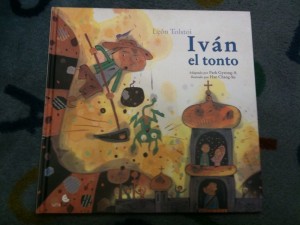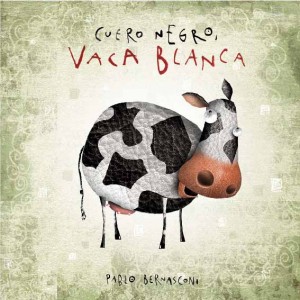 So it might have been rough on the kids (and my wife) that I was away last week in Buenos Aires. Knowing that I was out having a great time in the land of empanadas and Quilmes beer probably didn’t help much.
So it might have been rough on the kids (and my wife) that I was away last week in Buenos Aires. Knowing that I was out having a great time in the land of empanadas and Quilmes beer probably didn’t help much.
So I shopped well for everyone to let them know that I was, um, thinking of them. That included, as it always does on my trips overseas, a visit to local bookstores to look for good children’s books to bring back home.
This time I went to Yenny bookstore in the Alto Palermo shopping mall (I know, before you Buenos Aires snobs write in, that the Ateneo bookstore is much cooler). But see, Yenny had a big kid’s book section, and plenty of great titles to choose from. The only thing is that they were, by and large, the exact same books I’ve found in bookstores in Berlin, Madrid, Istanbul–you name it, you’ll always have your Sendaks, your Carles, your Boyntons, and the rest of the small elite of American and European authors whose works you’ll find on every continent.
I don’t mind that great books are translated and sent around the world. And there’s something a little dizzying, in a good way, about the idea of the book I photographed up top (which I found in Yenny but didn’t buy): a Russian Tolstoy story illustrated and adapted for children by a couple of Koreans, on sale in Spanish in Buenos Aires. It’s the perfect example of what Jorge Drexler was singing about in his sparkly remake of “Disneylandia”.
My problem is that I travel quickly but want to remember deeply. I want something that is actually produced in the country I’m visiting, and, god forbid, that might actually say something about that country. That’s where the global kidlit industry can be a little depressing.
I did finally find, hidden in a corner, the book Cuero Negro, Vaca Blanca (Black Leather, White Cow), written by Pablo Bernasconi. I know, he’s got an Italian last name, but so does everyone in Argentina. The fact is that he is an Argentinian children’s book author who does very cool stories with great pastiche illustrations, and I found his book in Buenos Aires. Sure, I read later on his blog that the book had actually been published by Random House and translated into English and Korean a half-decade before it was released in Argentina. But still, it’s about cows, which are a national Argentine obsession (my other pickup was called Opuestoros, which has been translated as Oppbullsits, and may or may not be Argentinian, but should be just because it’s also cute and bovine). My four-year-old daughter is seriously into this book already, and I’m happier for it.
I know that Maurice Sendak is a world heritage and whatnot, but I do feel for lesser-known authors around the world who would like to be able to make a living writing books for the kids of their countries. Books that can smartly reflect their national obsessions and values. It just seems more difficult than ever to actually pull that off.

Thanks for the post, Nate. We see the same thing here in Guatemala. I volunteer in a children’s library here in a small town. Most of our Spanish books have been translated from English. The stories are often poorly translated, or just not relevant to a Guatemalan child’s life. It would be wonderful to have more children’s books written by Guatemalans for Guatemalans. As a side note, I understand that when Room-to-Read decides to open children’s libraries in a country, they simultaneously open publishing houses. Good plan!
Wouldn’t it be great to bring back story telling? How many famiies sit around while one tells a story. The loosing of the imagination will be known by our future inventions